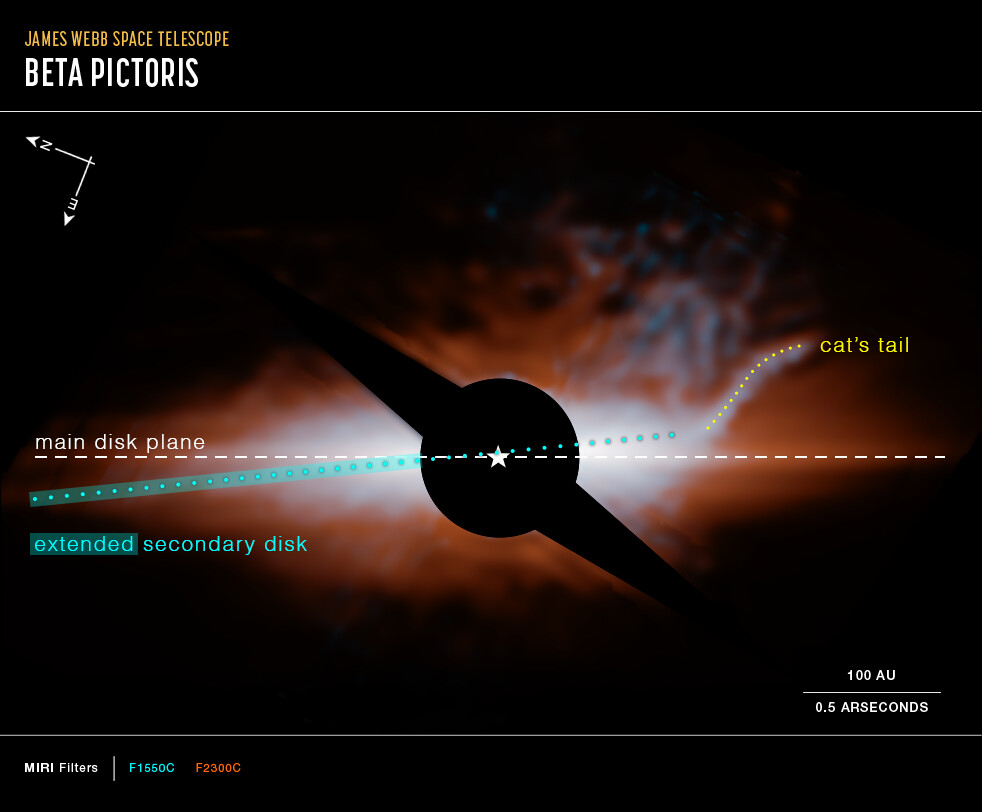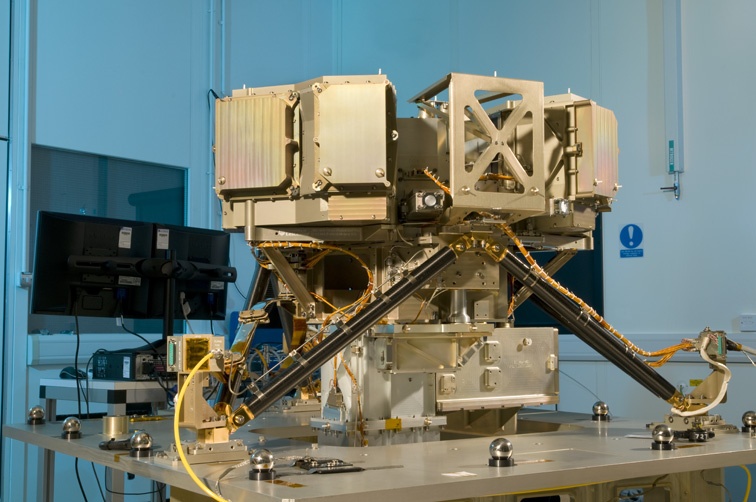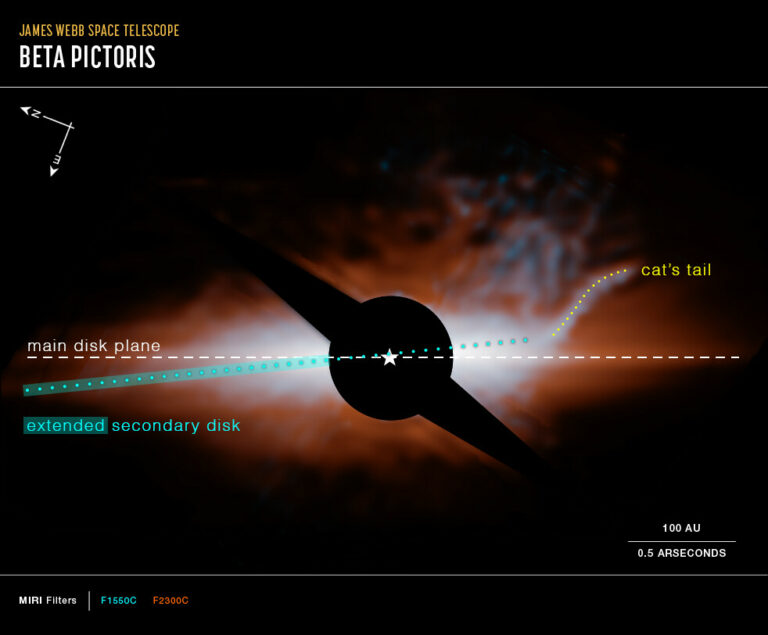Unexpected Second Disk Unveiled Around Young Star Beta Pictoris by JWST
You may believe that you have a thorough understanding of someone, but once you perceive them from a slightly altered perspective, they can astonish you. However, I am not referring to ordinary individuals; instead, I am referring to an extraordinary celestial body that has been extensively examined and captured in countless images. Beta Pictoris, which has been observed by numerous telescopes including Hubble, is known to harbor a remarkable disk. Nevertheless, with the advent of the James Webb Space Telescope and its enhanced sensitivity and advanced instrumentation, a fresh and thrilling characteristic is unveiled.

Beta Pictoris, located in the southern constellation Pictor, is the second brightest star in the sky. It is a relatively young star, estimated to be around 20 million years old, and is situated just 63 light years away from us, making it a close neighbor in our cosmic vicinity.
In 1984, observations unveiled an extraordinary dust disk surrounding Beta Pictoris, which is believed to be the birthplace of planets. Subsequently, the European Southern Observatory confirmed the presence of at least two planets, creatively named Beta Pictoris b and Beta Pictoris c, orbiting within this dust disk.
Over time, Beta Pictoris has attracted significant attention from astronomers, including studies conducted by the Hubble Space Telescope (HST) that unveiled an additional, previously unseen disk.
This second disk is slightly tilted compared to the first one. However, further investigations carried out by the James Webb Space Telescope (JWST) have revealed a novel structure within this second disk.
Led by Isabel Rebollido from the Astrobiology Center in Spain, the team utilized the Near-Infrared Camera (NIRI) and the Mid-Infrared Instrument (MIRI) of the JWST to conduct a more comprehensive exploration of the disks surrounding Beta Pictoris.
To their surprise, they discovered a distinct structure resembling a cat’s tail, positioned at an angle to the secondary disk. Despite the wealth of previous observations, including those from the remarkable HST, the instruments on the JWST possess greater sensitivity and resolution, enabling these new findings.

The “Cat’s Tail” was not the sole unexpected finding. Upon analyzing the MIRI data, it became apparent that the two disks exhibited different temperatures, indicating that they were composed of distinct materials. Notably, the secondary disk and Cat’s Tail displayed higher temperatures compared to the main disk.
Furthermore, it is evident that both the secondary disk and Cat’s Tail are comprised of dark material, as they have not been previously observed in visible or near infra-red light but appear bright under mid infra-red wavelengths.
One plausible theory to account for the higher temperature is that the material is highly porous, akin to the substances found on comets and asteroids. While the nature of the dust poses a relatively straightforward question, determining the nature and origin of the Cat’s Tail presents a more challenging task.
The research team explored various hypotheses to explain the tail’s shape but failed to reach a satisfactory model. Among their favored theories is the notion that the tail resulted from an event that transpired within the disk approximately a century ago!
This event could have involved a collision, propelling the dust into a trajectory that mirrors that of the impacting object, subsequently causing it to disperse and form a curve. Additionally, the angle of the tail from our perspective may contribute to the illusion of it appearing steeper than it truly is.
One thing remains certain: the recent observations of Beta Pictoris have unveiled several surprises regarding this well-known and extensively studied entity.
Further research will undoubtedly enhance our understanding of these novel features. However, it leaves me pondering about other familiar objects that may still harbor unforeseen revelations.
Do not forget to share your opinion with us to provide you with the best posts !




0 Comments